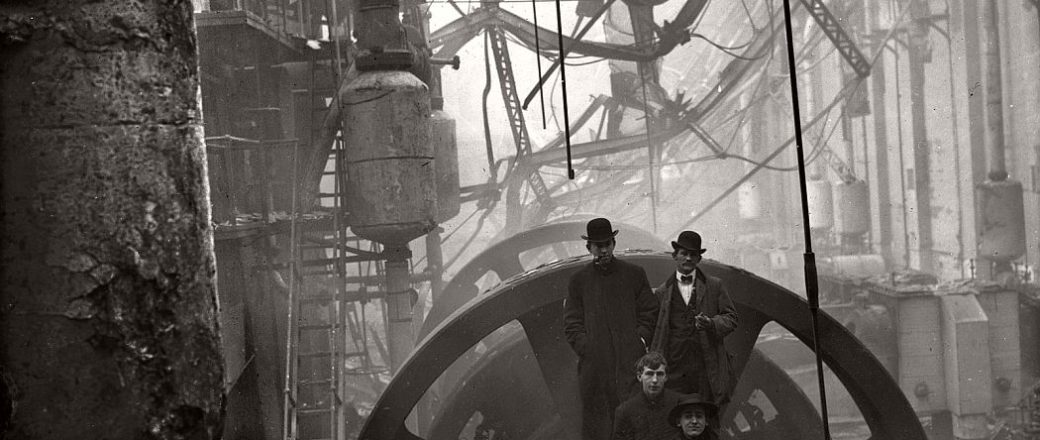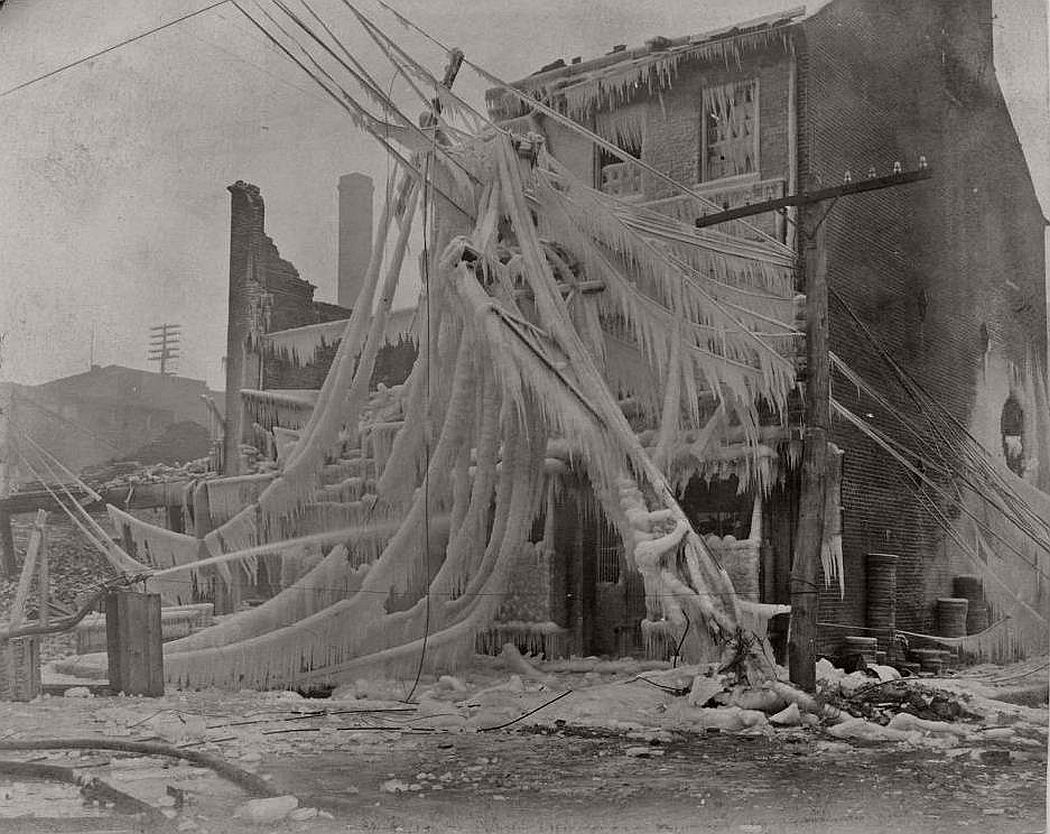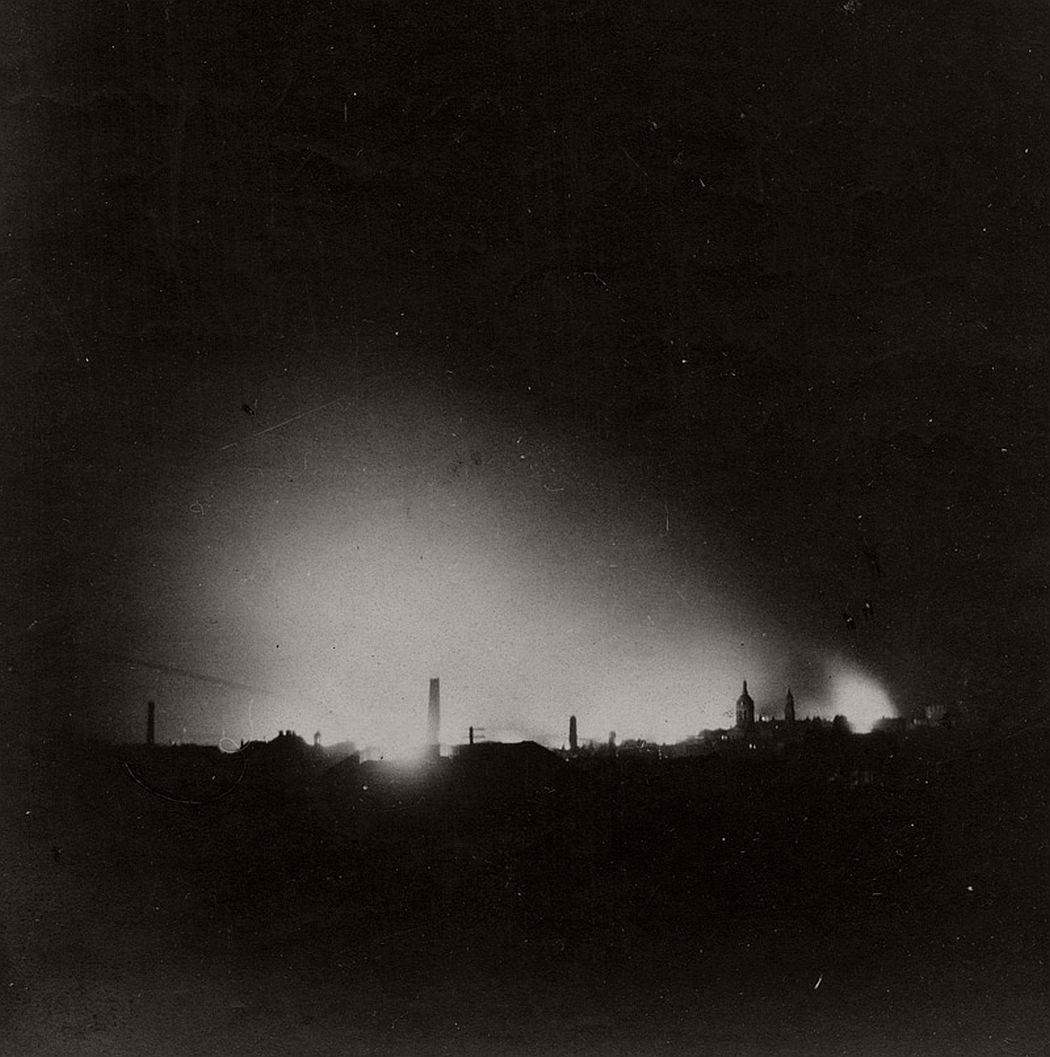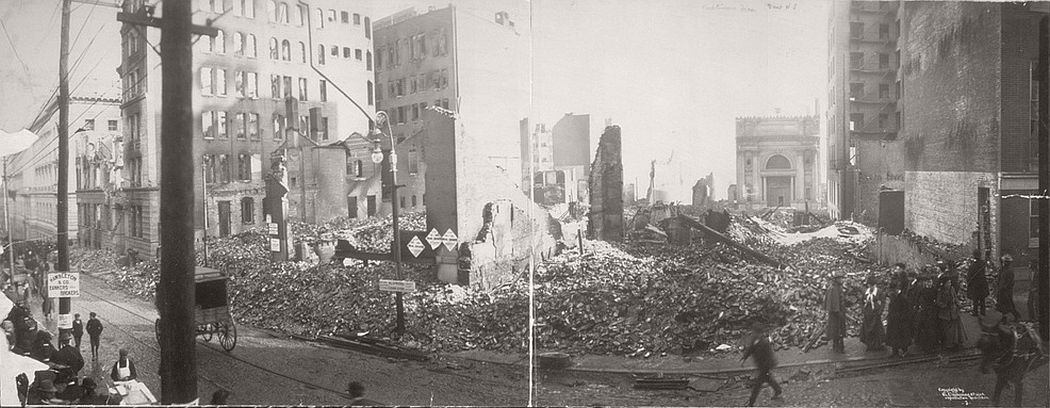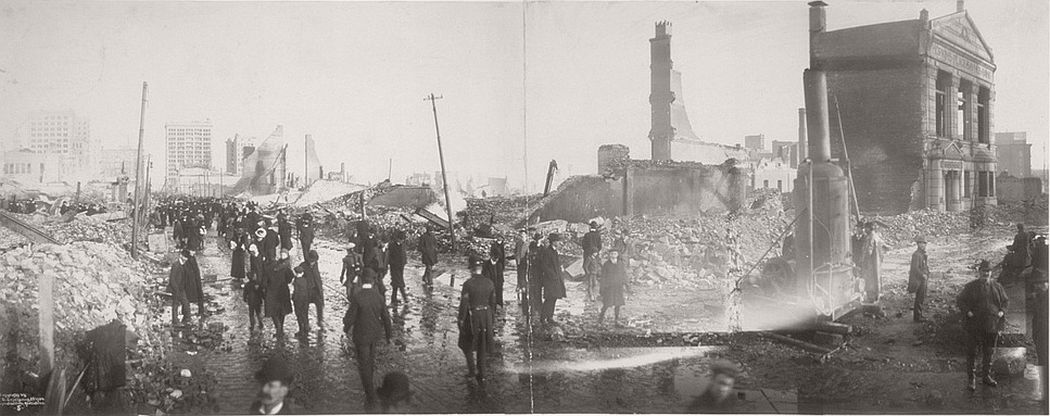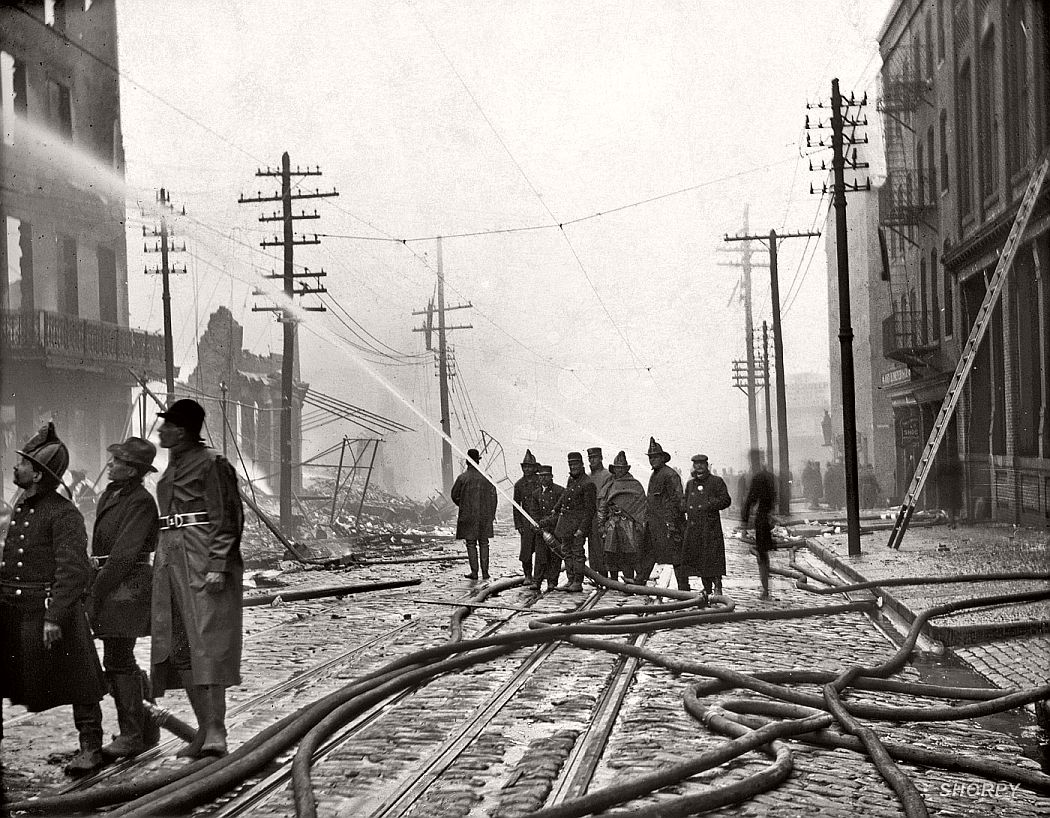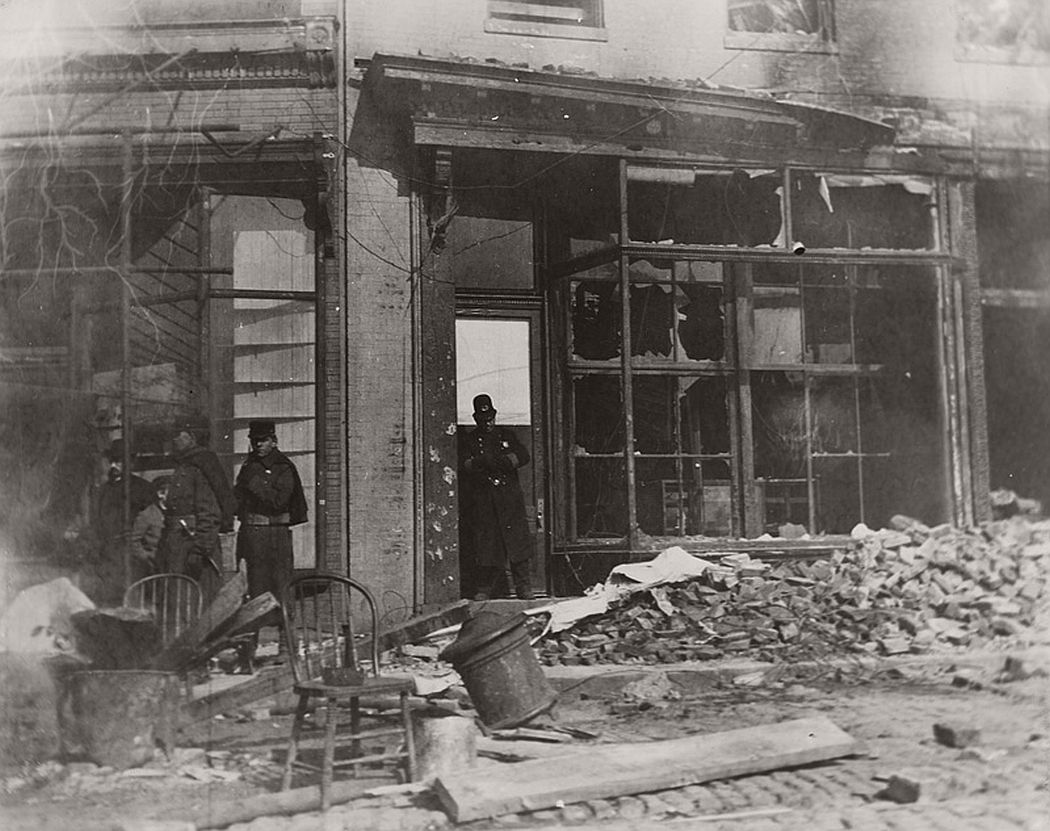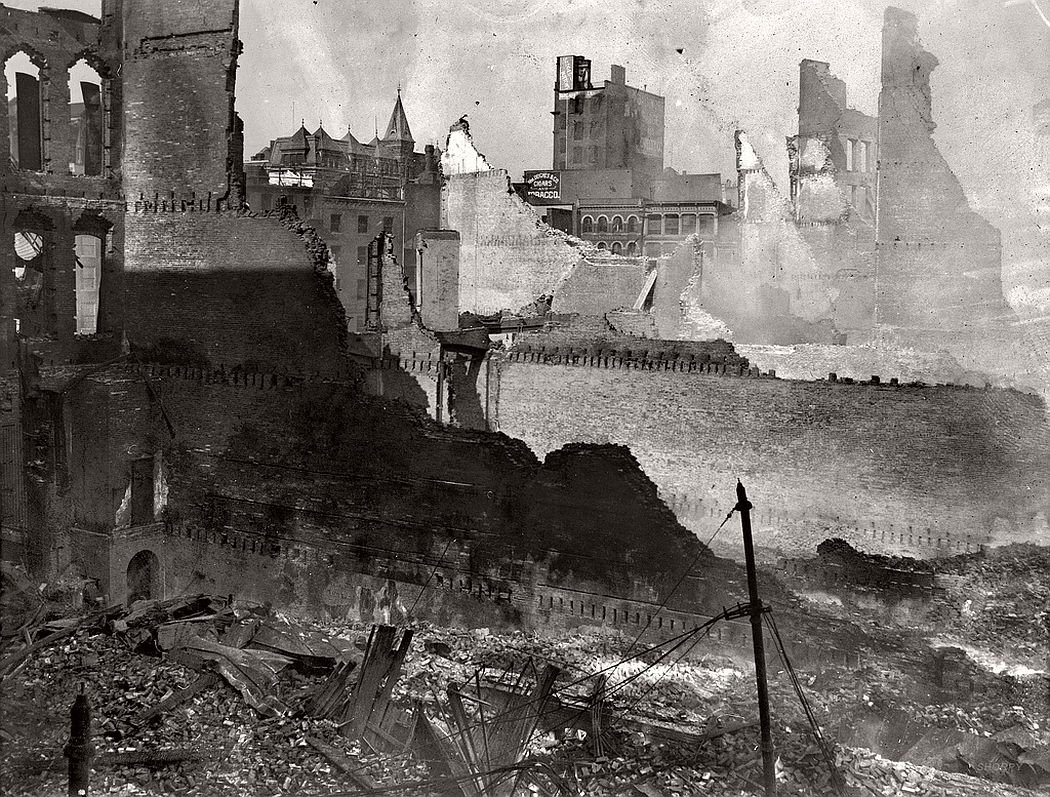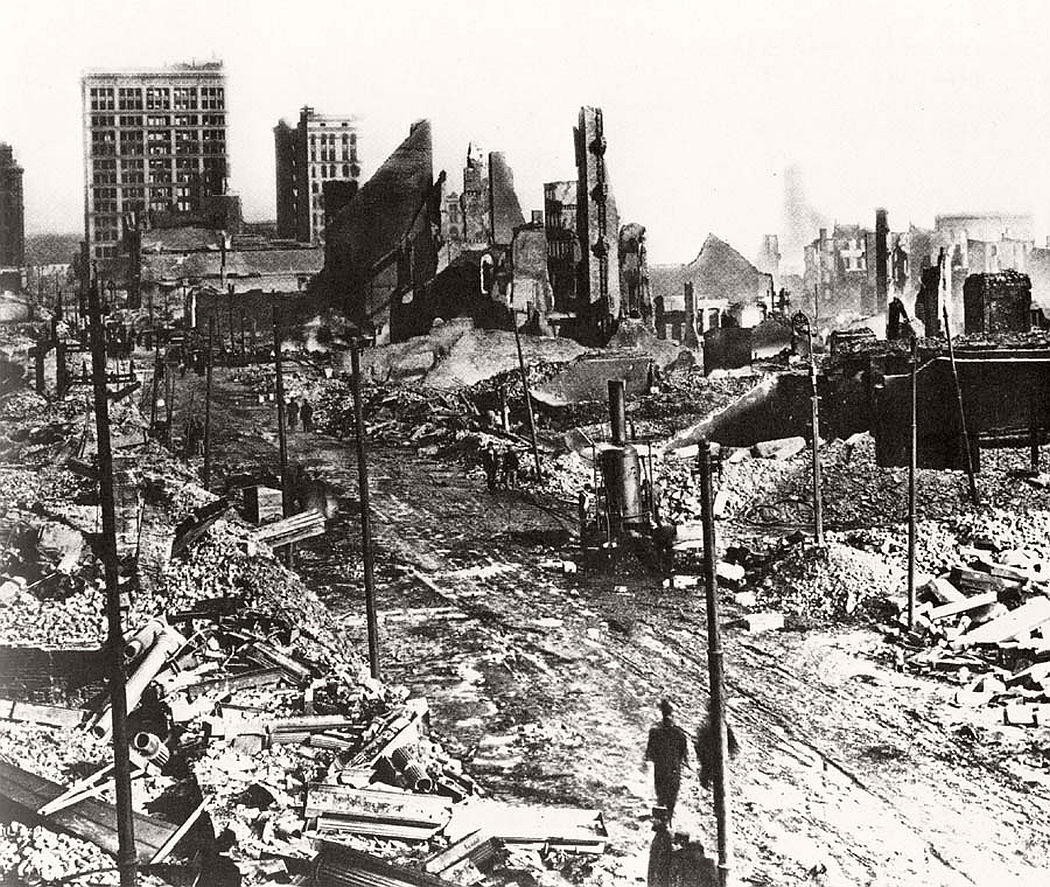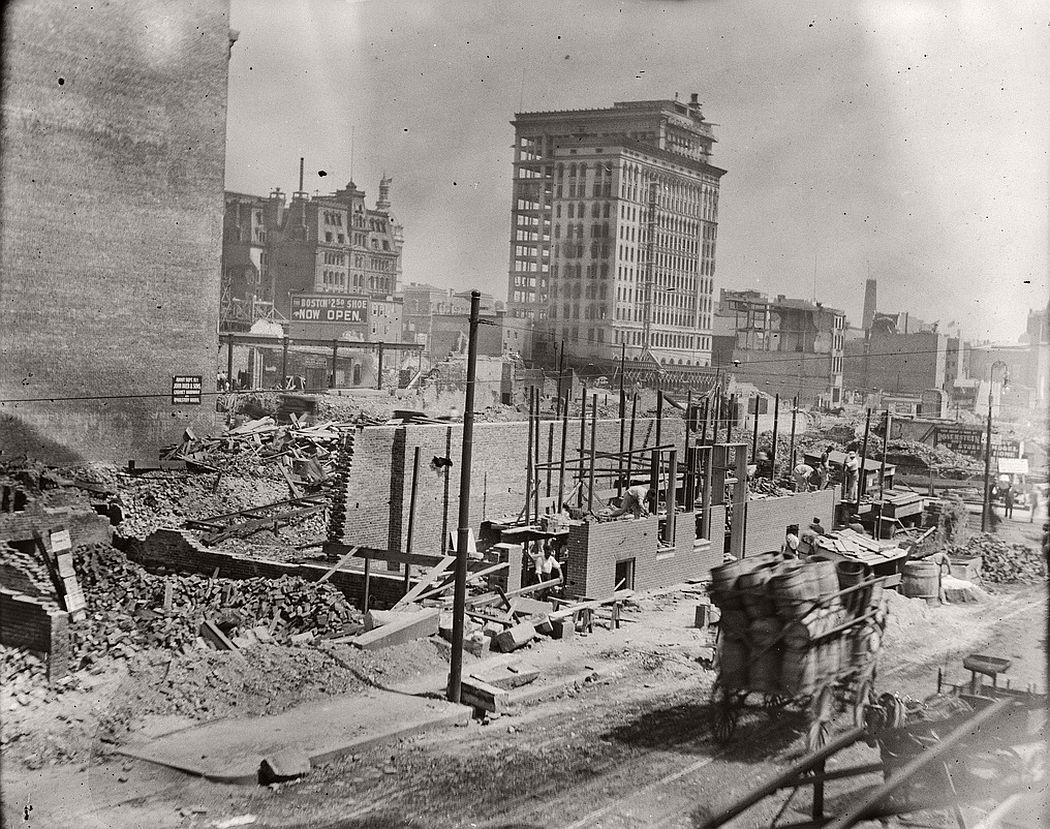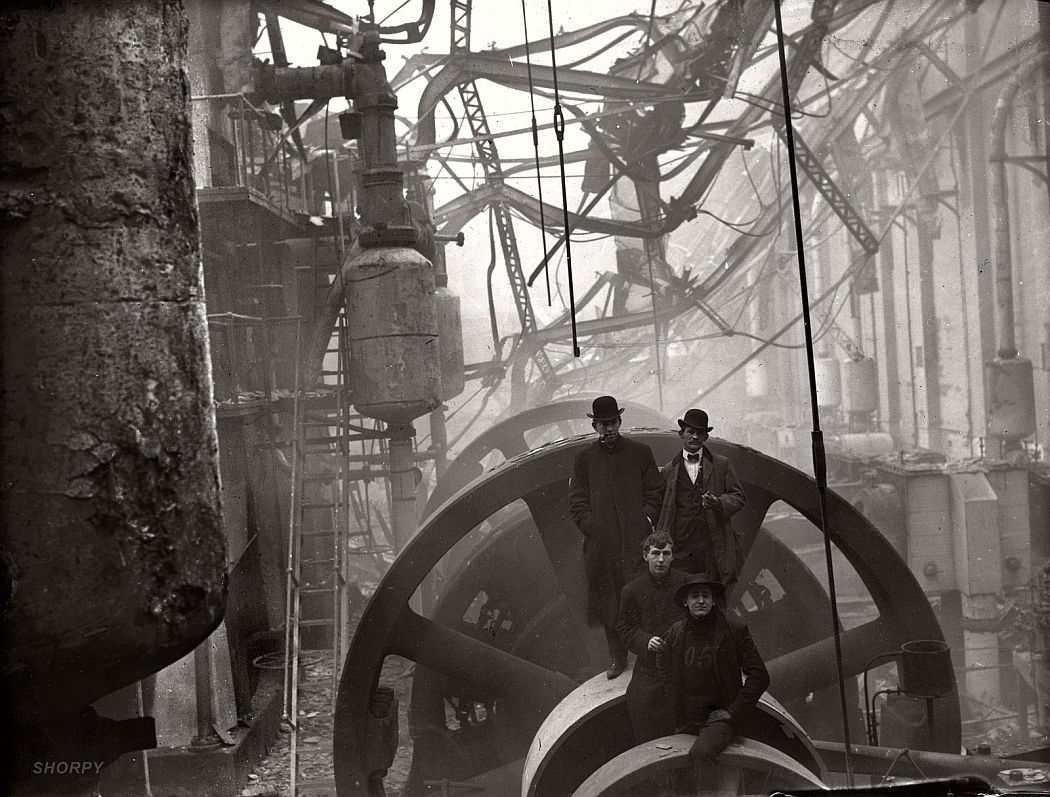The Great Baltimore Fire raged in Baltimore exactly 113 years ago (February 7, 1904). 1,231 firefighters helped bring the blaze under control, both professional paid Truck and Engine companies from the city’s B.C.F.D. and volunteers from the surrounding counties and outlying towns of Maryland, as well as out-of-state units that arrived on the major railroads. It destroyed much of central Baltimore, including over 1,500 buildings covering an area of some 140 acres (57 ha).
It is considered historically the third worst conflagration in an American city, surpassed only by the Great Chicago Fire of 1871, and the San Francisco Earthquake and Fire of 1906. Other major urban disasters that were comparable (but not fires) were the Galveston Hurricane of 1900 and most recently, Hurricane Katrina that hit New Orleans and the Gulf of Mexico coast in August 2005.
One reason for the fire’s long duration involved the lack of national standards in firefighting equipment. Despite fire engines from nearby cities responding with horse-drawn pumpers, wagons and other related equipment (primitive by modern day standards, but only steam engines were motorized in that era) carried by the railroads on flat cars and box cars, many were unable to help since their hose couplings could not fit Baltimore’s fire hydrants.
Much of the destroyed area was rebuilt in relatively short order, and the city adopted a building code, stressing fireproof materials. Perhaps the greatest legacy of the fire was the impetus it gave to efforts to standardize firefighting equipment in the United States, especially hose couplings.
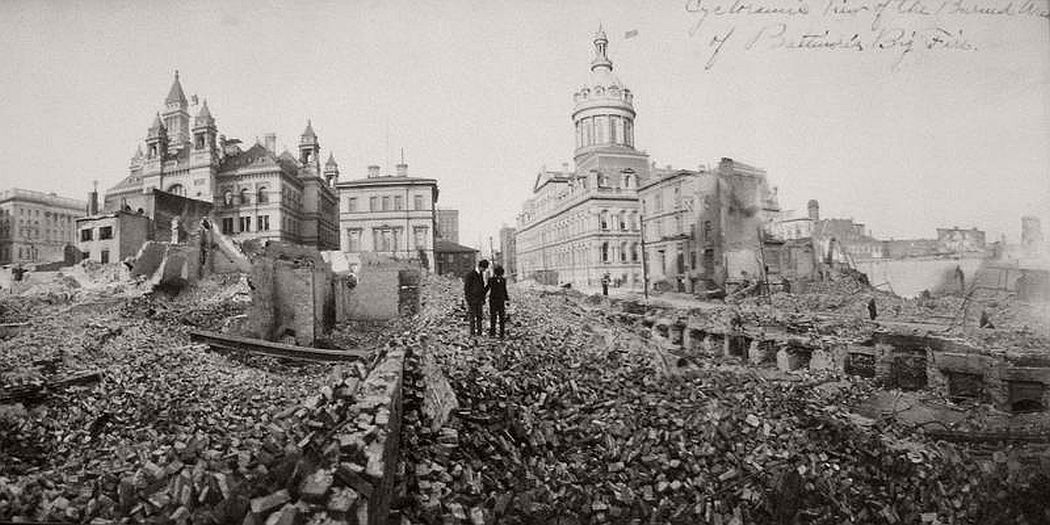
The old 1875 Baltimore City Hall with dome in background and the 1889 Italian Renaissance style General Post Office with its nine towers and central tall clock tower survived the blaze

